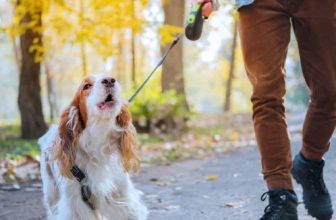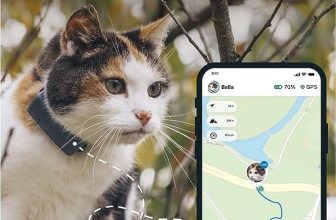How to Train a Service Puppy: A Step-by-Step Guide
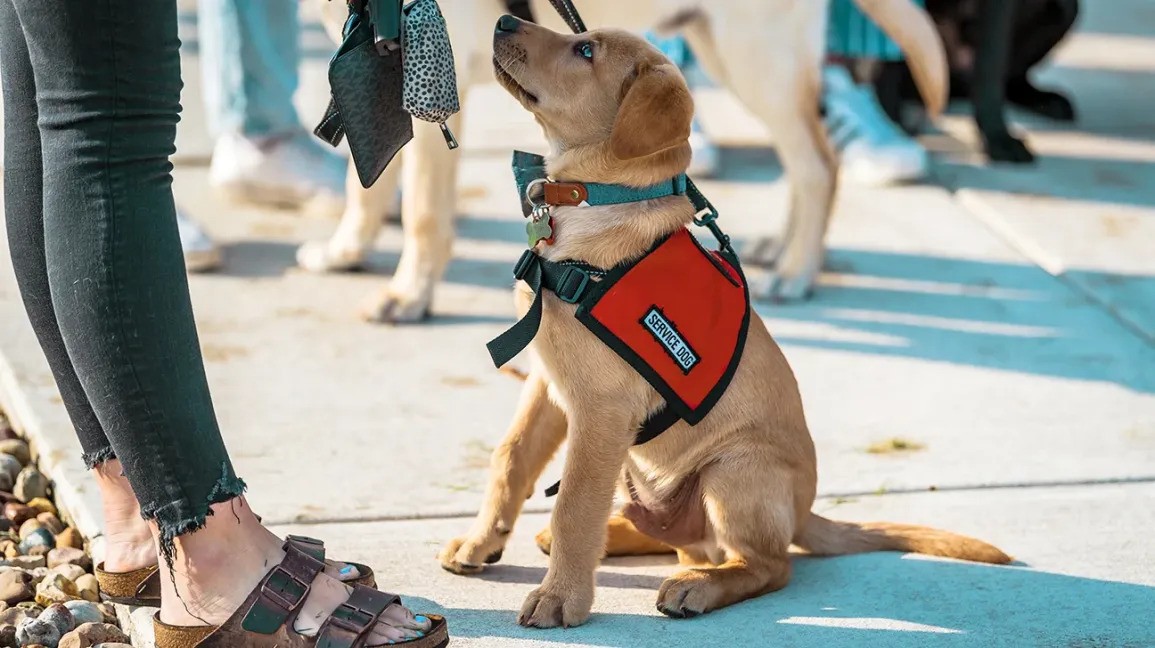
How to Train a Service Puppy: Training a service puppy entails teaching them valuable abilities. These talents enable them to assist people with disabilities.
Service puppies play an important part in enhancing the lives of those they assist. They offer support, companionship, and safety. Patience and effort are required while training a service puppy. It’s not simply simple commands. You must teach them certain tasks to help their future owners.
Starting early is critical. Puppies are eager to learn and adjust rapidly. The appropriate training can help them develop into dependable friends. This article will coach you through some useful strategies and techniques. You’ll learn how to develop a deep attachment with your puppy. This link is critical to their development and success as service animals.
Introduction To Service Puppy Training
Service dogs help people with disabilities. They perform important tasks. These tasks include guiding the blind, alerting the deaf, or calming anxiety. Their training focuses on specific skills. Each dog learns what their handler needs.
Having a service dog brings many benefits. They offer companionship and support. Service dogs can help with daily tasks. This support makes life easier for their owners. They also provide emotional comfort. Their presence can reduce stress and fear.
Overall, service dogs play a vital role. They improve the quality of life for many. Their training and skills make a big difference.
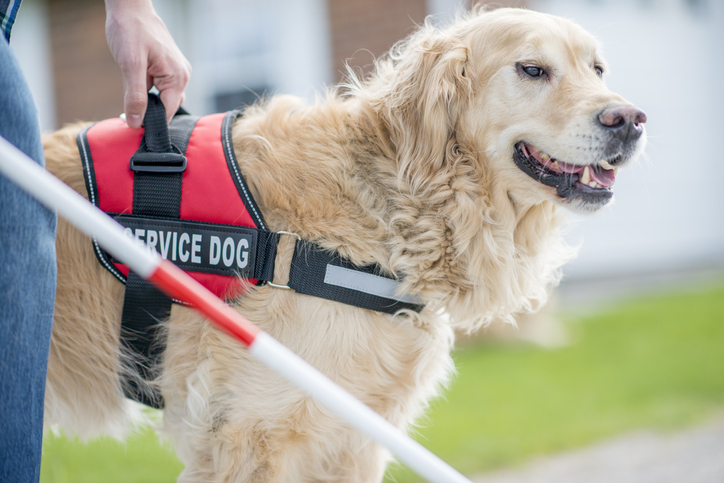
How to Train a Service Puppy
Credit: www.akc.org
Identifying The Right Puppy
Some breeds are better for service work. They have special traits. Good choices include:
| Breed | Why They Work Well |
|---|---|
| Golden Retriever | Friendly and easy to train. |
| Labrador Retriever | Very gentle and smart. |
| German Shepherd | Strong and loyal. |
| Poodle | Intelligent and hypoallergenic. |
Look for traits in a puppy. They should be calm and friendly. Puppies must be eager to learn. They should not be shy or aggressive. A good service puppy helps people. They make life easier. Choose wisely for the best results.
Essential Supplies For Training
Choosing the right gear is important for training a service puppy. Use comfortable collars and harnesses. They help keep the puppy safe. Select a lightweight leash for easy control.
For toys, pick items that are durable and safe. Chew toys can help keep the puppy busy. Interactive toys make training fun and engaging.
Treats are essential for positive reinforcement. Use small, tasty treats for rewards. This encourages the puppy to learn and obey. Choose healthy options to keep your puppy fit.
Creating A Training Schedule
Creating a training schedule is very important. Consistency helps puppies learn better. Keep training sessions short. Aim for about 5 to 10 minutes each time. Repeat training often. This builds good habits.
Balance training with playtime. Puppies need fun breaks. Play helps them relax. It also keeps their interest high. Use toys or games that they enjoy. This makes training feel less like work.
Stick to a routine. Train at the same time each day. This helps your puppy know when to expect training. Early mornings or after meals work well. Be patient and keep it fun.
Socialization Skills
Socializing a service puppy is very important. Start with exposure to different environments. Take the puppy to parks, busy streets, and shops. Each place has new sounds and sights.
Next, focus on interacting with people and other animals. Let the puppy meet friendly dogs and cats. This helps them learn to be calm. Encourage meeting different people too. Friendly strangers help the puppy feel safe.
Use treats to reward good behavior. Praise them when they stay calm. Make these experiences fun and positive. This will help the puppy grow into a well-adjusted service dog.
Basic Obedience Commands
Teaching basic obedience commands is important for service puppies. Start with Sit. Hold a treat above the dog’s nose. Move it back over their head. They will naturally sit to reach the treat. Reward them with praise.
Next is Stay. Ask your puppy to sit. Show your palm to them. Step back slowly. If they stay, reward them. Repeat this until they understand.
For Come, use a leash. Call your puppy’s name. Pull gently on the leash if needed. Reward them when they reach you.
Leash training is also key. Let your puppy get used to wearing a leash. Start walking in a quiet area. Praise them for staying close.
Teach public manners. Keep your puppy calm in crowded places. Reward them for good behavior. This helps them learn to focus.
Task-specific Training
Service puppies help people in many ways. Customizing tasks is very important. Each handler has different needs. Training should focus on those needs. For example, a handler may need help with mobility. The puppy can learn to fetch items or open doors.
Advanced commands are also key. Teach the puppy to respond to specific cues. This can include “sit,” “stay,” or “come.” Use clear and simple commands. Repetition helps the puppy learn faster. Training sessions should be short and fun.
Practice these skills in different places. This helps the puppy adapt to new environments. Always reward good behavior. Treats or praise can motivate the puppy.
Public Access Readiness
Understanding access rights is key for service puppies. Service puppies help people with disabilities. They can go to many public places. This includes restaurants, stores, and parks. They must behave well in these areas.
Public access means these puppies can go anywhere their handler goes. They should not be a distraction. Puppies must stay calm around noise and people. Training helps them learn this behavior.
Many people do not know the rules. Educating the public is important. Service puppies have the same rights as their handlers. Always be respectful and kind to others.
Handling Distractions And Setbacks
Training a service puppy can be hard. Unexpected challenges may arise. Puppies can be easily distracted. Loud noises or sudden movements can break their focus.
Stay calm and patient. If a puppy gets distracted, gently bring them back. Use a firm yet kind voice. Reward them when they refocus. This builds trust and confidence.
Practice in different places. Start in quiet areas. Gradually add more noise and people. This helps the puppy learn to focus in diverse situations.
Remember, setbacks are normal. Every puppy learns at their own pace. Keep sessions short and fun. Consistency is key for success.
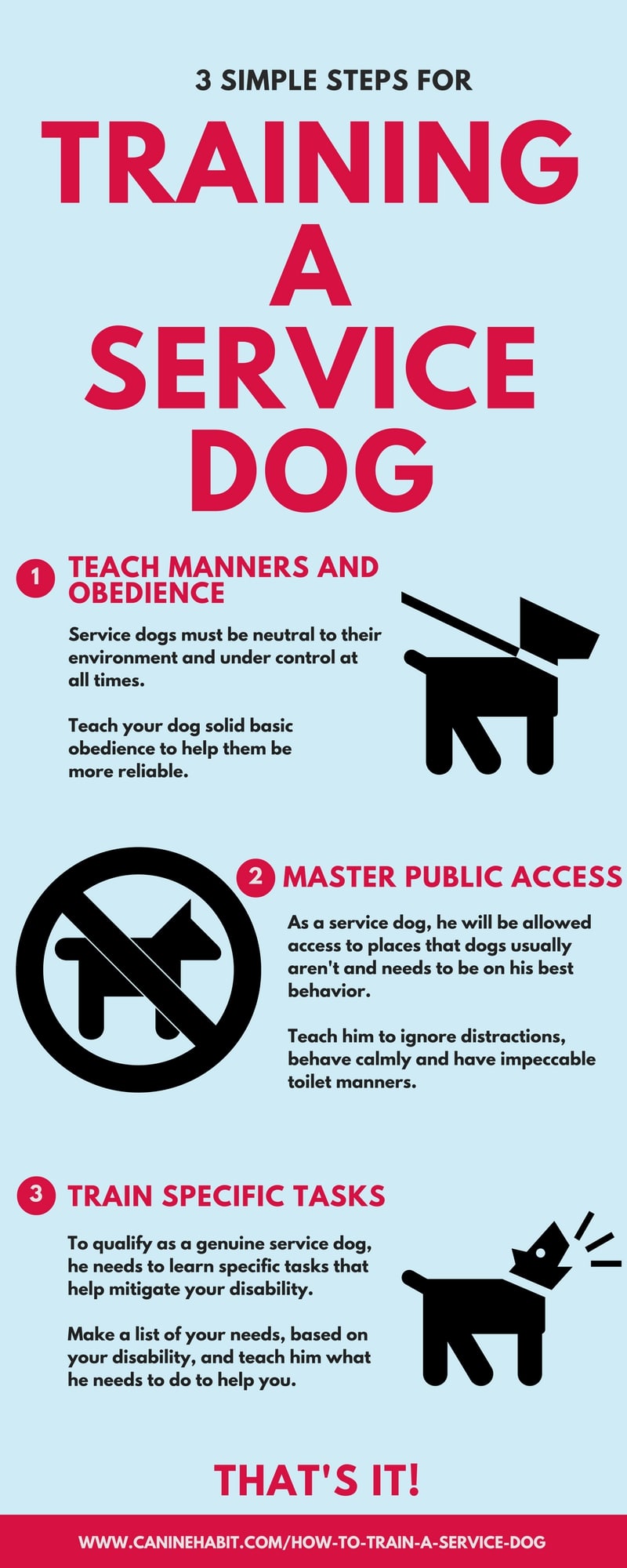
How to Train a Service Puppy
Credit: caninehabit.com
Health And Wellness
Regular veterinary care is very important for service puppies. They need check-ups to stay healthy. Vaccinations help protect them from diseases. A vet can also check for any health issues. This keeps your puppy safe and strong.
Diet and exercise are key for service dogs. Provide a balanced diet with good nutrients. Quality dog food supports their growth. Regular exercise helps keep them fit. Walks and playtime are great activities. It also builds a strong bond between you and your puppy.
Certification And Legal Considerations
Training a service puppy involves a specific certification process. This process ensures the puppy is ready to help people. Each dog must meet certain standards. These include behavior, skills, and health checks.
To begin, find a recognized training program. Many programs offer guidance and support. They teach you how to train your puppy properly. After training, the puppy must pass a test. This test checks if the puppy can perform tasks.
Knowing your legal rights is important. Service dogs have special laws. These laws allow them to enter public places. They help people with disabilities. It’s crucial to understand these rights.
Always keep paperwork ready. This includes training certificates and health records. Having this information helps in case of questions.
Continued Education And Bonding
To train a service puppy is a long journey. Ongoing training helps the puppy learn new skills. Regular practice keeps the puppy sharp. Use positive reinforcement for better results. Treats and praise work well. Consistency is key. Always train in a calm space.
Strengthening the bond with your puppy is important. Spend time together every day. Play games and go for walks. Trust builds through shared experiences. Socialization is also vital. Expose your puppy to new sights and sounds. This helps them feel safe. A strong bond leads to better teamwork.

How to Train a Service Puppy
Credit: www.healthline.com
Frequently Asked Questions
How Do I Start Training A Service Puppy?
Begin by establishing a strong bond with your puppy. Use positive reinforcement techniques, such as treats and praise, to encourage desired behaviors. Start with basic commands like “sit,” “stay,” and “come. ” Consistency and patience are key. Gradually introduce more complex tasks as your puppy becomes more confident.
What Commands Should A Service Puppy Learn?
A service puppy should learn essential commands like “sit,” “down,” “stay,” and “heel. ” Additionally, teach them to respond to specific tasks, such as retrieving items or providing support. Focus on commands that relate to the tasks they will assist with.
Regular practice ensures they master these important skills.
How Long Does It Take To Train A Service Puppy?
To train a service puppy typically takes about 18 months to two years. This timeframe includes basic obedience training and task-specific skills. Each puppy’s progress varies, depending on their temperament and the complexity of tasks. Consistent training sessions will help accelerate their learning and enhance their skills.
Can Any Puppy Become A Service Dog?
Not every puppy has the temperament to become a service dog. Ideal candidates are calm, sociable, and eager to please. Breeds often suited for service work include Labrador Retrievers and Golden Retrievers. Assess each puppy’s behavior and personality to determine their suitability for training.
Conclusion
How to Train a Service Puppy: Training a service puppy takes time and patience. Consistency is key. Start with basic commands and build from there. Use positive reinforcement to encourage good behavior. Socialization is important for their development. Take them to different places and meet new people.
Remember, every puppy learns at their own pace. Stay positive and celebrate small successes. With love and dedication, your service puppy will grow into a reliable partner. Enjoy the journey together. Your hard work will pay off in the end.


